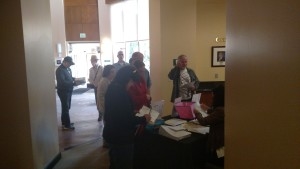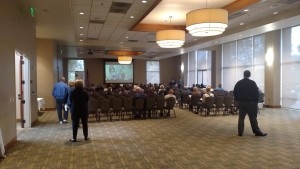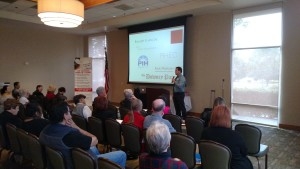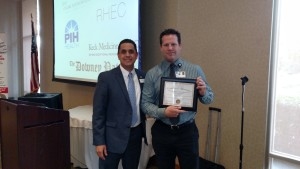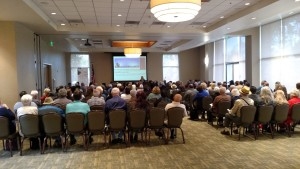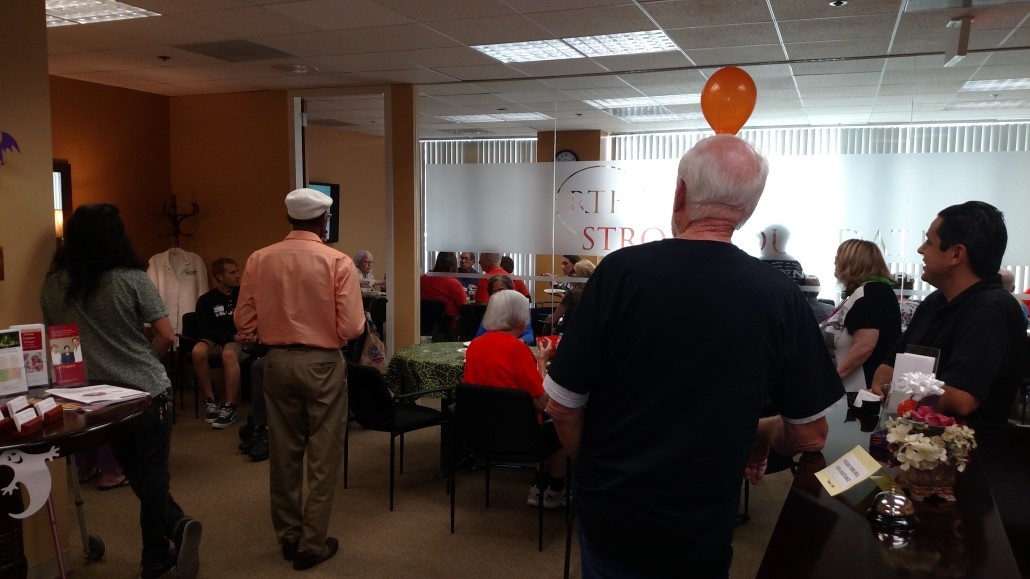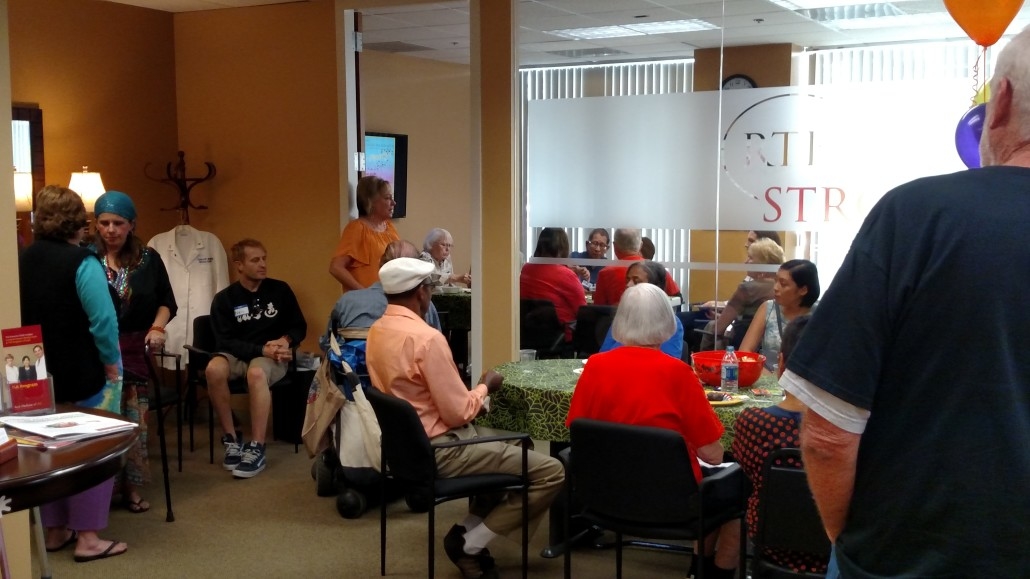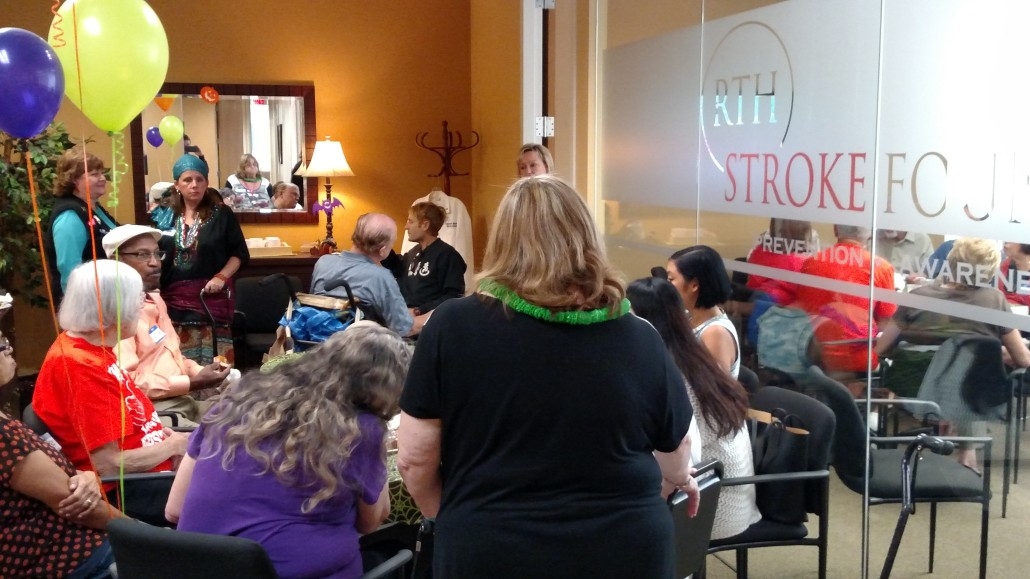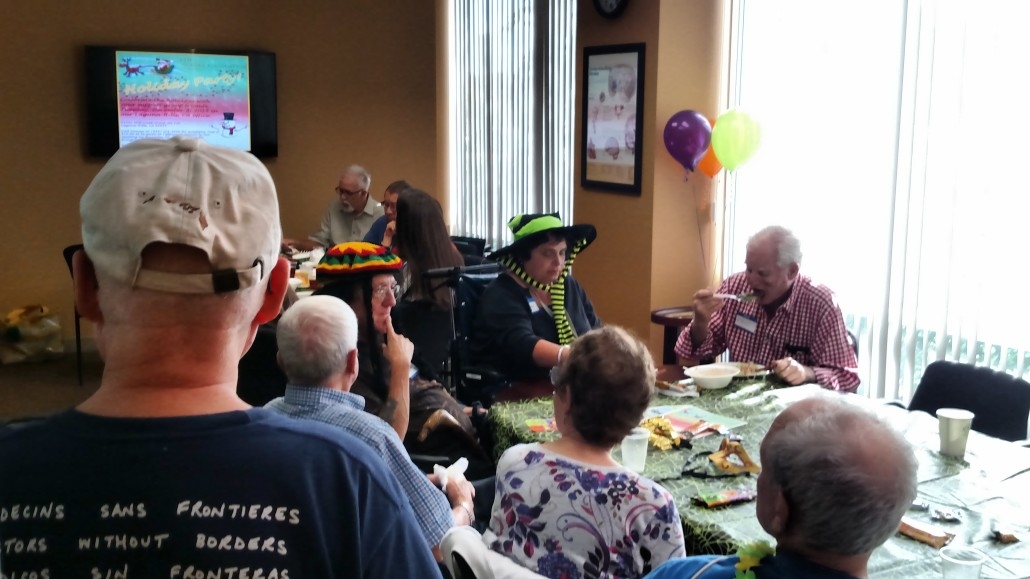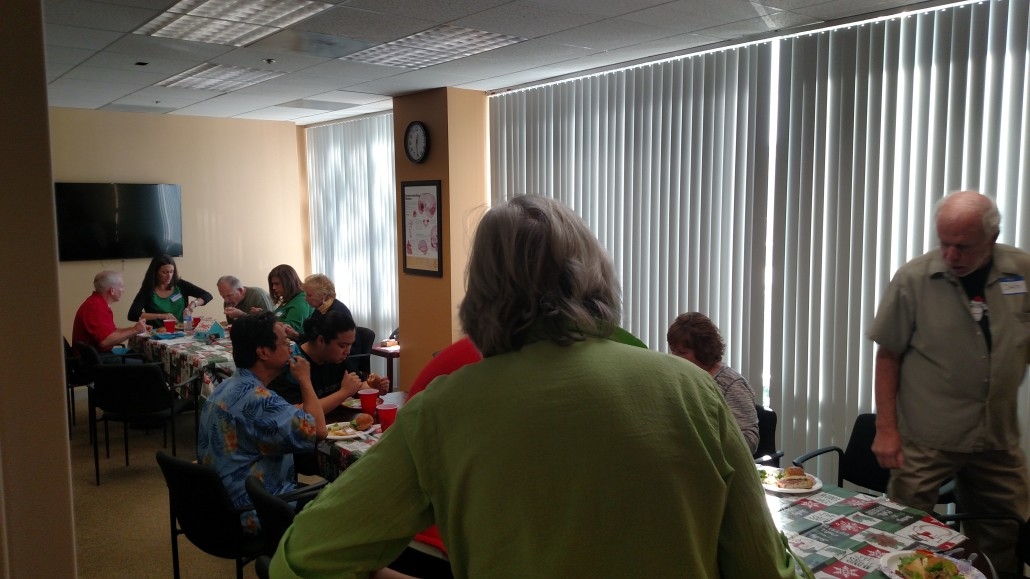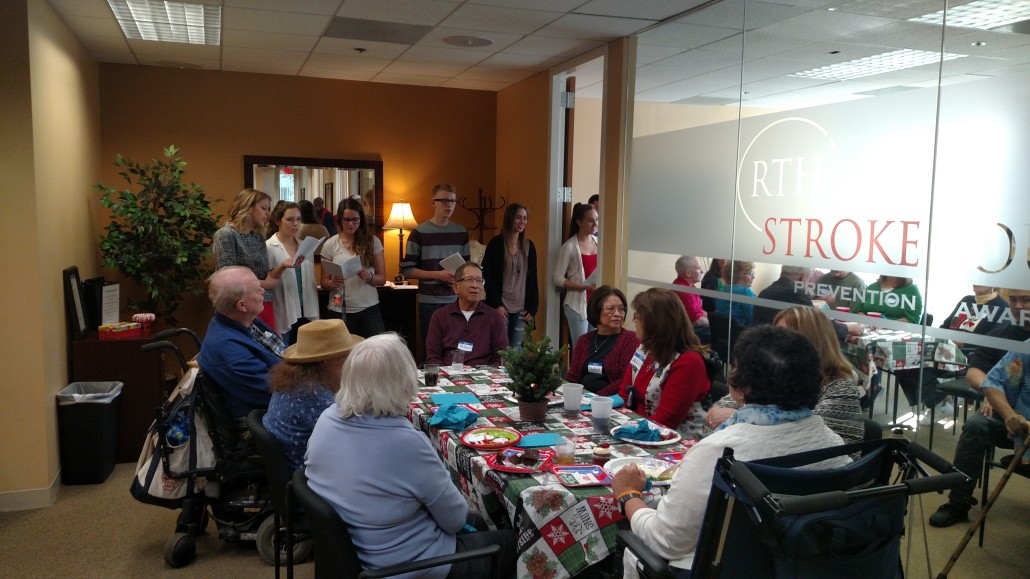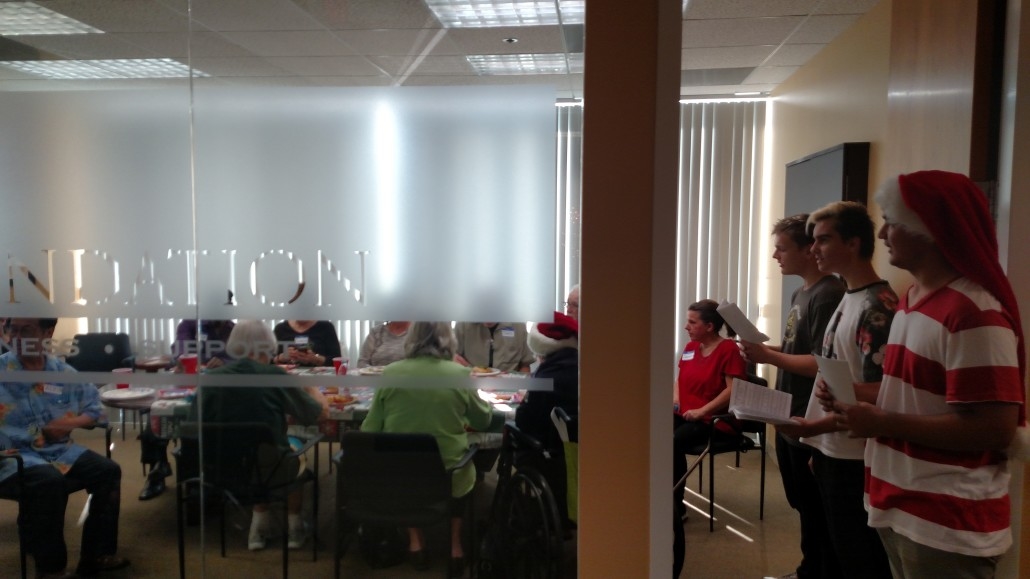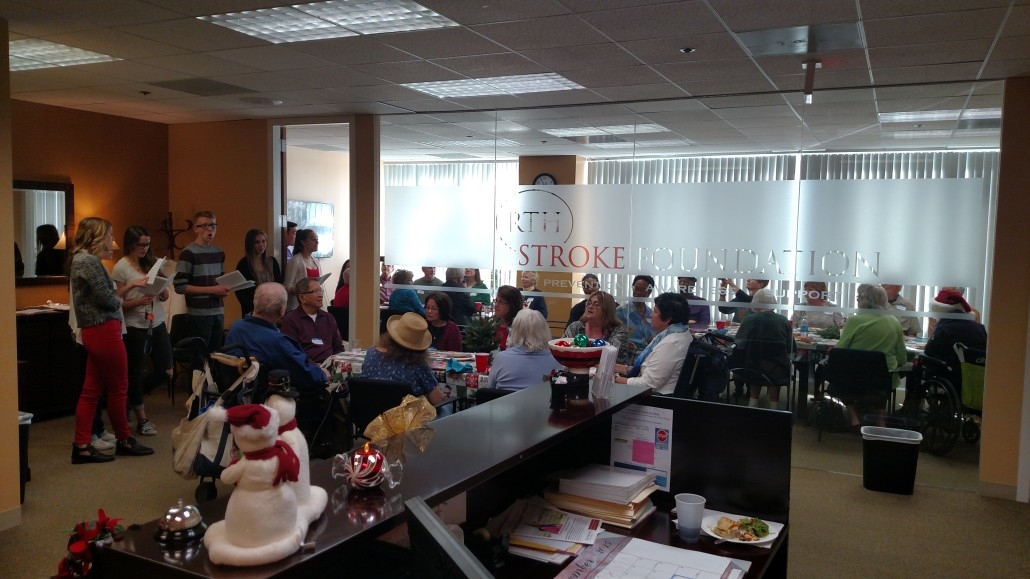Downey Patriot, September 26, 2013 More than 100 residents received free stroke prevention screenings Wednesday.
74-year-old Albert Nosal came to the Primary Stroke Prevention Screening at RioHondo Event Center Wednesday looking for hope. His blood pressure soaring out of control at188/98 and having already suffered four “mini-strokes”, Albert was looking for new ideas about how to get his life back.
He found plenty of great diet, exercise and lifestyle tips from Yaga Szlachcic, MD, a highly respected cardiologist, clinical leader and researcher from Rancho Los Amigos National Rehabilitation Center who delivered a brilliant presentation on controlling an irregular heartbeat (known as atrial fibrillation or “a-fib”) and stroke prevention.
Albert was one of more than 100 Downey-area residents who marveled as Dr. Szlachcic explained the importance of modifying behaviors to help limit the risk of having a stroke. Like most of those in attendance, he learned a lot.
“I’ve been prescribed 14 different medications, some with disastrous side effects,” he said. After hearing Dr. Szlachchic, he said now has hope that he can work with his doctor to lower my blood pressure not only with drugs, but with diet, exercise and even meditating before going to sleep at night.
“She spoke at our level, and answered our questions in a way we could all understand,” Albert said. Her presentation was simply outstanding.”
The seminar was the fourth of five free Primary Stroke Prevention events in Downey that have provided free carotid artery, aortic abdominal aneurysm and blood pressure screenings for more than 850 people. These free screenings have been valued at more than $335,000. The seminars are sponsored by the RTH Stroke Foundation, Rancho Los Amigos Foundation, The Downey Patriot and the Rio Hondo Event Center.
Many lives have been saved because of these seminars, which USC’s Nerses Sanossian, MD, Director of the Roxanna Todd Hodges Comprehensive Stroke Clinic at the Keck School of Medicine of USC, called “the most successful Primary Stroke Prevention seminar series our nation has ever had.”
The final 2013 seminar will be held on Wednesday, November 6 from 9:30 a.m. to 11 a.m. at Rio Hondo Event Center. The speaker will be the world-renowned neurologist Helena Chui, MD, who is the Chair of Neurology of the Keck School of Medicine of USC. One of the world’s foremost researchers in Alzheimer’s Disease, Dr. Chui will discuss her groundbeaking research and the relationship between Alzheimer’s, vascular dementia and stroke.
This free seminar is certain to be “sold out” very quickly,” said RTH Stroke Foundation President Deborah Massaglia. “Dr. Chui is a tremendous speaker, and in addition to hearing her presentation, attendees will also receive a complimentary blood pressure screening.”
Since high blood pressure is the number one cause of strokes, this screening is especially important,” she said. Reservations may be made online at rthstrokefoundation.org or by phone at (888) 794-9466.
At Wednesday’s event, Dr. Szlachcic explained how many medications can cause irregular and/or accelerated heartbeats. “You can recognize a-fib with several common symptoms, including an abnormal feeling in the chest, a rapid and strong heartbeat or an irregular heartbeat. Other symptoms include dizziness, chest pain or shortness of breath, fainting or passing out or anxiety.
“Anxiety is a very important symptom, because people have panic attacks, sweaty palms and sometimes even a feeling of impending doom,” Dr. Szlachcic said. “If you have these symptoms or any time you feel that something isn’t right with your heart, you should contact your doctor.”
Of course, before a person’s health deteriorates to that level, there are many things that can be done to live healthier lifestyles beyond the normal caution to avoid smoking, Dr. Szlachcic said.
Event attendees Elsa Van Louiven and Shirley McConnell each said they planned to eat more fruits and vegetables. “It really opened my eayes to know that a-fib can cause a clot that travels to your brain and causes a stroke,” Shirley said. “I am going to eat a more healthy diet from now on.”
“I learned some things that will help me become healthier,” Elsa said. “It was well worth the trip to Rio Hondo, because what I learned could help save my life.”
“This was my second Stroke Prevention Seminar, and I picked up quite a bit more important information from this very helpful event,” said Tom Riddell.
One strategy Dr. Szlachcic discussed was “eating real food, not food products. This most often means eating from the sides of the market, not from the center aisles.” Another idea she spoke about was adding cinnamon to the diet. “Cinnamon has a positive effect, and cinnamon tea is especially effective. You simply make a cup of tea, put a cinnamon stick in the cup and wait for it to cool down. Then you remove the stick and you can use it several more times. The cinnamon adds a sweet taste, but doesn’t contain sugar.”
She also debunked some myths about the relative value of ginko, garlic and ginger. “Ginko does not improve memory, but it affects the blood in a negative way. Garlic can negatively affect how your blood thins, and in some cases, with certain medications, ginger can also have a negative affect on how your blood thins. Beware of the 3 Gs!”
Dr. Szlachic exhorted the audience to walk for at least a half hour at least five days a week. “Walking is the most healthy, natural and wonderful way to get the exercise your body needs to avoid a stroke. You can also swim or do Zumba, but the key is that you have to move your body to stay healthy.”
She also recommended meditation before going to bed at night, although she said, “the best time to meditate is when you need it. You can just sit down, relax, breathe deeply and count slowly from 1 to 10. You can find lots of techniques online, but I would suggest you keep it very simple as you begin.”
“Living a healthy lifestyle is the key,” Dr. Szlachcic said. “If you are also doing something that makes you feel fulfilled, you will be on the way to living well, and having a healthy, productive life where you will never have a stroke.”
